Max Gottschalk
By Kathy McMahon
By Kathy McMahon
Can a piece of furniture serve as a metaphor for the town in which it came to life? Perhaps, if the piece in question was designed by longtime Tucsonan, Max Gottschalk. His work is authentic, like Tucson. Beautiful. Tough. Laid-back. Imperfect. And while Gottschalk’s work—like Tucson—is enjoying a resurgence in popularity, it’s been appreciated and cherished for years by people fortunate enough to be in on the secret. That number is growing.
As more Gottschalk furniture has come onto the market in recent years, a new group of collectors has taken notice. “I used to trip over his furniture,” says furniture and art dealer Gino Baldisare, who has probably bought and sold more Gottschalk pieces than anyone else in his almost two decades of business in Tucson. “Now I’m lucky if I find a few pieces a year.” But Baldisare is happy Gottschalk is getting more recognition, even if it means more competition. “People should know who he is. He left behind a beautiful body of work and it deserves to be seen,” says Baldisare.
A prolific designer, Gottschalk produced chairs, settees, lamps, couches, benches, stools, glass dining, coffee, and side tables, and more in his long career as both an industrial and furniture designer. The Pretzel Chair, the K Chair, the C Couch, the X Bench; many of Gottschalk’s pieces were strikingly original while others bore similarities to work by designers such as Le Corbusier. His WIC chair echoes design elements of the sling chair by Italian designer and erstwhile Tucson resident Georgio Belloli, who predated Gottschalk’s arrival in the Old Pueblo by a decade or so. Belloli’s chair shares attributes with William Katavolos’ T-Chair. And so it goes.
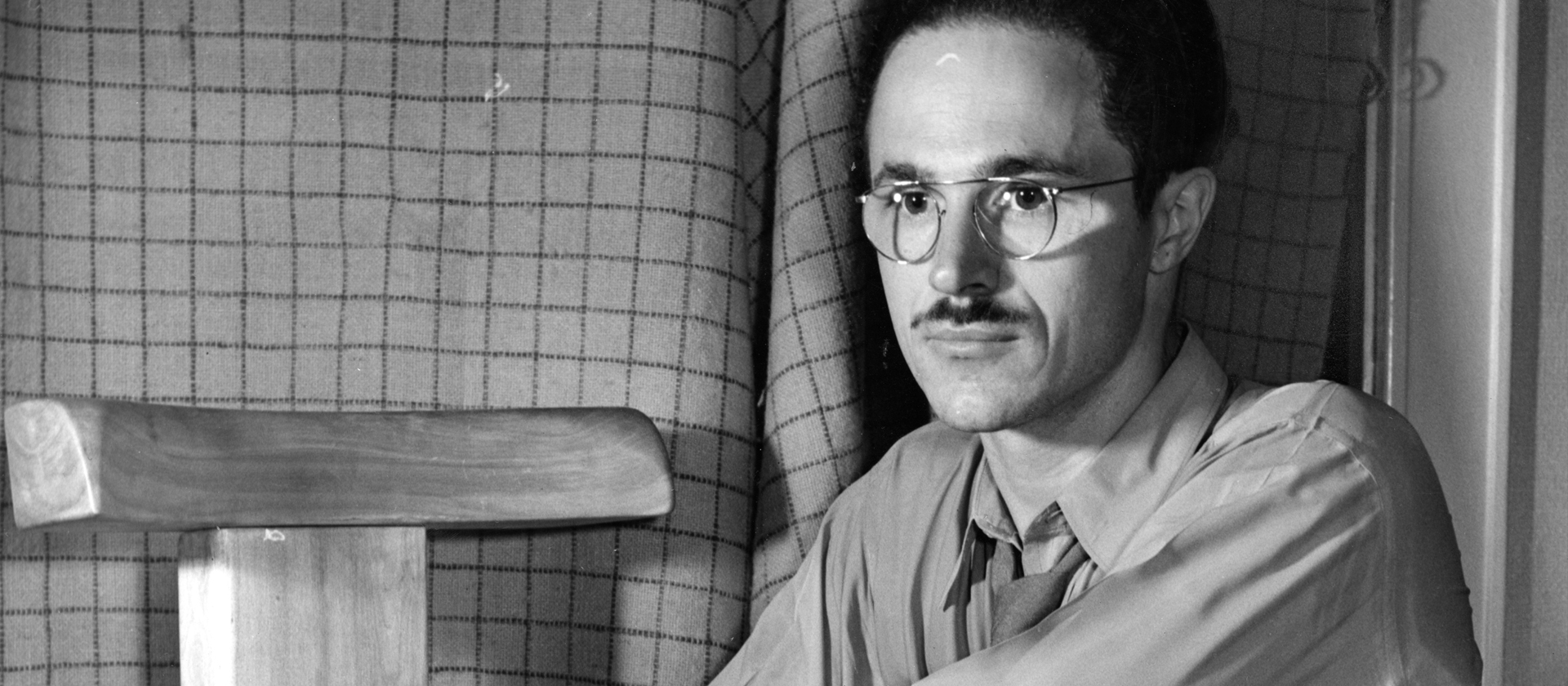
Born December 14, 1909, in St. Louis, Missouri, to parents who were both professional musicians, Max Gottschalk was surrounded by an accomplished extended family whose members exposed him to art, music, architecture, construction, and physics, among other subjects. In 1929, Gottschalk matriculated at Washington University in St. Louis, where he studied art, including drawing, painting, and design, graduating with a B.A. in 1933. For the next decade he would take courses in art and art history, architecture, archaeology, psychology, and engineering at Washington University, his relentlessly curious mind finding stimulation in myriad and seemingly disparate subjects.
In 1932, Max Gottschalk married Josephine Pipkin—for the first time. They would go on to divorce and remarry a total of three times (in later interviews he would stretch that number to five or six), calling it quits permanently in 1945. It was a bitter split with allegations of domestic abuse by Josephine published in the local St. Louis newspaper. Herself an accomplished pianist and music teacher, Josephine retained custody of their two young children, Sandra (age 2) and Jules (age 1). Gottschalk would not see his children again until his daughter’s graduation from high school in 1960. According to architect, longtime friend, and former business partner Stan Schuman, “Max had a peculiar personality and sometimes had a hard time with relationships.” In 1979 Gottschalk married Cecil Cornsweet of Tucson and they remained happily married until her death in 1995. “After his wife died we were pretty much constant compaions” says longtime friend and sculptor Curt Brill. “Max was a live wire. If you took hold, you might get shocked or you might get taken to wonderful places.”
After his 1933 graduation from college and for the next three+ decades, the itinerant Gottschalk worked as an industrial designer and engineer for companies such as Bell Aerosystems Co. and Walter Dorwin Teague in New York, the Hussman Company in St. Louis, and Hughes Aircraft in Tucson. Concurrently, he engaged in designing and making furniture on his own; reimagining stale design tropes, experimenting with new materials, and refining production processes.
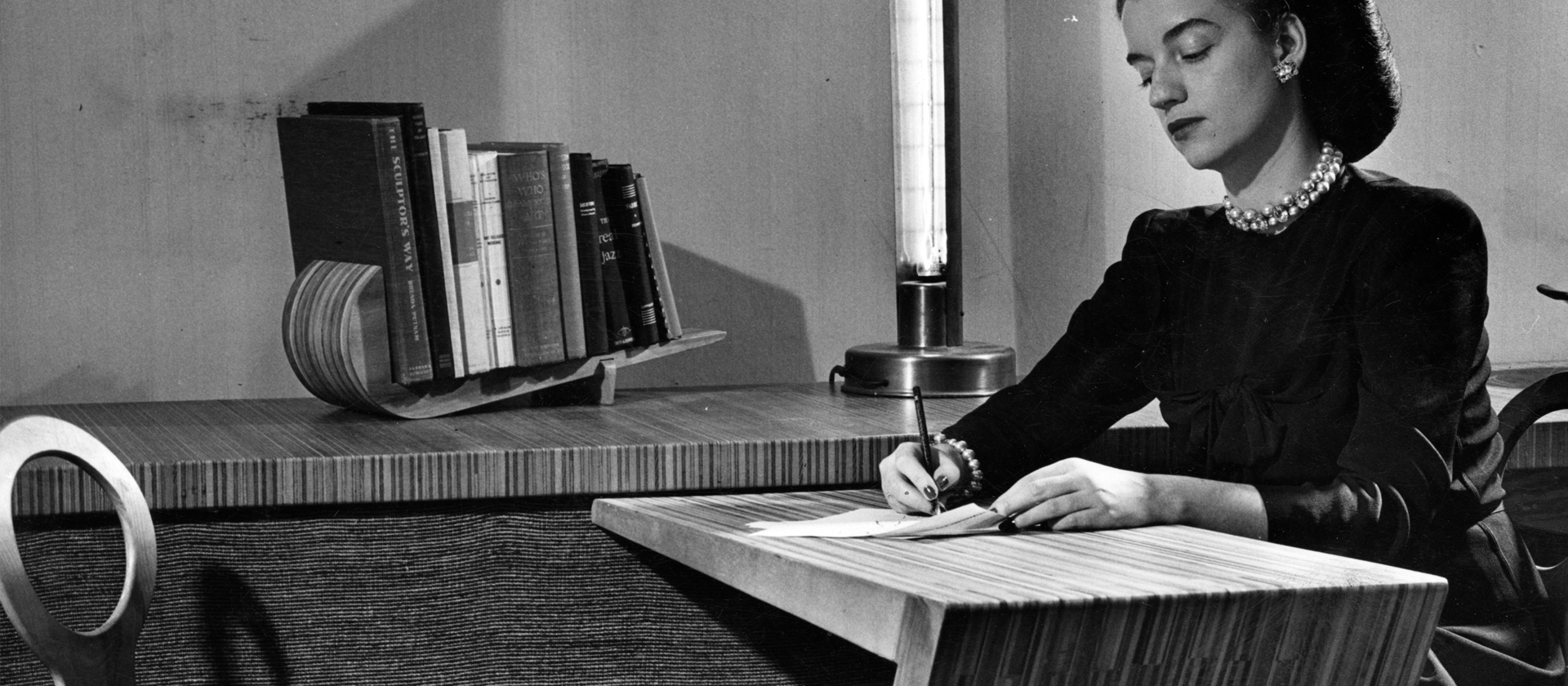
In 1939, the government of Newfoundland, Canada, hired Gottschalk for his design and engineering expertise. They tasked him with helping to establish an industry that the people of Markland (a communal farming community) could develop and use to support themselves as part of an economic reconstruction program, at the same time making use of the area’s natural resources, namely forests. The commercial enterprise Gottschalk helped spearhead was furniture design and manufacturing, looking to Scandinavia as a business model of production and exportation. He sought to combine modern principles with the use of natural materials in the creation of a “national” furniture style (ignoring vernacular traditions already in place).
While in Newfoundland, he published a “Design Manifesto” that echoed the design approach held by many 20th century modernist architects and designers: That form should follow function. The furniture style or method he created was referred to as “Godes, ” thought to be a combination of the words “good” and “design” that Gottschalk coined. He maintained that, “Godes as a method derives a rich heritage from functionalism and the international style, but to these it adds common sense, and avoids the over-intellectual and over stric credo.” Later in the manifesto he posits, “Good design comes from brain juice, not pedagogical formulae and sedulous aping of mannerisms with no logical reason behind them.” With the advent of World War II, the Newfoundland project was cancelled, and in 1942 Gottschalk’s work there ceased. He left Canada and returned to the United States.
For the next decade he worked as an industrial designer and engineer claiming to have invented or significantly refined numerous everyday objects including the electric organ, the toaster, the open frozen food case, the bar code, the plastic wrap we now use to keep meat and cheeses fresh, and the paper towel holder, as well as defense and space-industry products such as missile-testing equipment, a lunar escape vehicle, and a rocket belt, among others. He even designed a dog-training electric shock collar with Phoenician Gail Lee, which was advertised in 1960 as the Electro-Leash in Modern Mechanix. His son remembers being in an elevator with his father who told him he had invented the elevator touch pad, “but I don’t know if that’s true or not,” says Jules. Gottschalk’s affinity for a good story sometimes makes it difficult to parse truth from fiction.
At some point during this time he found himself living in Manhattan, where he owned an apartment and would occassionally rent out portions of it. The story goes that former “tenants” included Marlon Brando, whose face he cast in mask form, actress Maureen Stapleton, and comedian Wally Cox. Himself an accomplished pianist, Gottschalk also befriended musician Bobby Short during this time. Friends remember Short visiting Gottschalk in Tucson in the early 1980s.
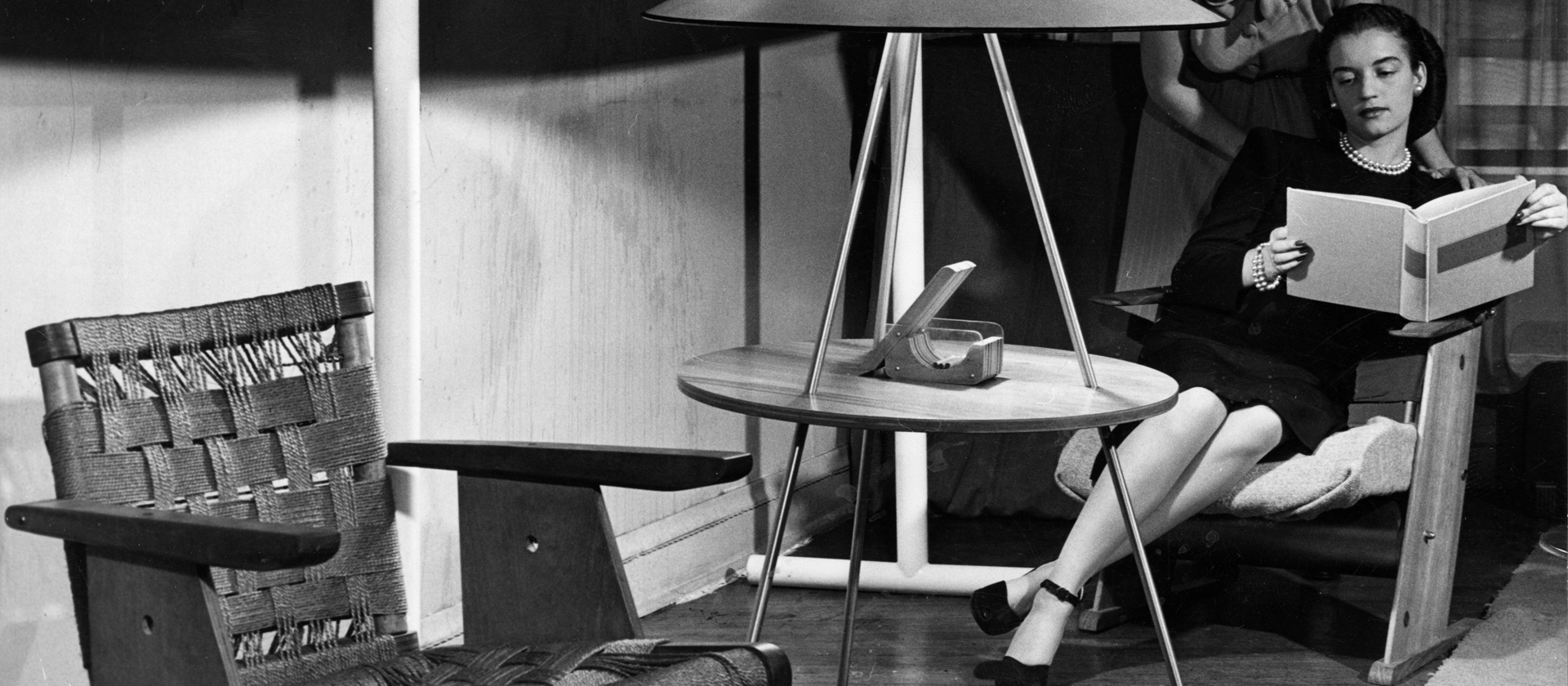
In 1952, Gottschalk moved to Tucson for an engineering job at Hughes Aircraft, where he worked for eight years. Architect, decades-long friend, and former business partner Stan Schuman says, “He used to tell the story that he was working late at Hughes Aircraft one night and a guy came into his office area and asked him what he was doing. Max talked excitedly about what he was working on, was a dynamic conversationalist, and always hated any kind of a void in conversation. When Max came to work the next day, he got an unexpected raise. The person he had spoken with was Howard Hughes.”
In 1967 he joined the faculty at Pima Community College, where he taught industrial design and related subjects for 22 years. (He was granted Faculty Emeritus status in 1999.) True to type, he held an iconoclastic view of university education, even though he was an instructor. He considered universities to be out of date and favored a more vocational approach to education. In a 1982 videotaped inteview Gottschalk says, “The professors think they’re gods and you have to emulate their prejudices.” His son Jules said, “I don’t think he even used textbooks when he taught.” Gottschalk believed learning best took place in a hands-on environment. Fellow Pima instructor and longtime friend Gigi Brown adds, “He was a genius. I never met a single student who didn’t think he was the best teacher they ever had.” Former student John Furrer says, “He was quite an eccentric character. He could look at someone’s personality and figure out what they would be good at. If you were missing a finger, he would tell you how to work around it.”
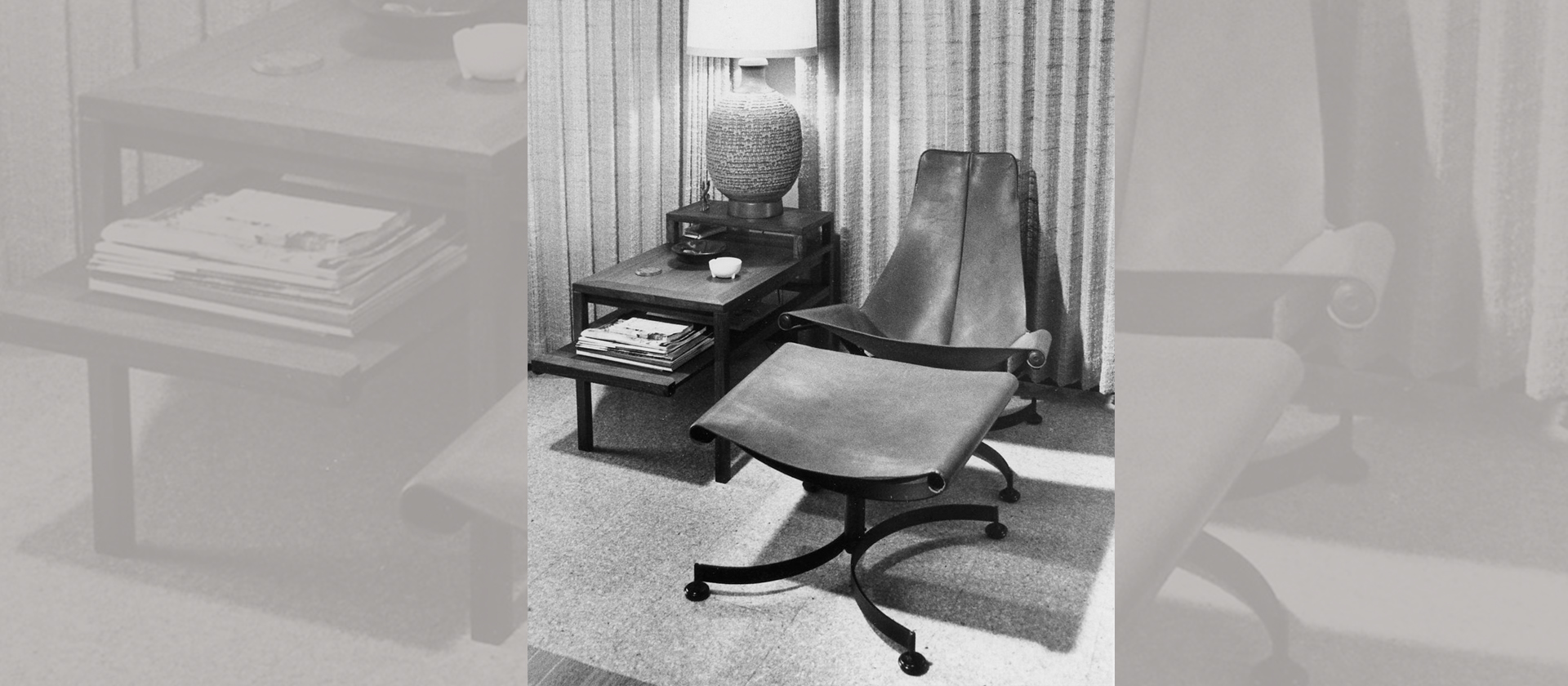
In the early 1970s Gottschalk partnered with then-architecture-student Stan Schuman to form furniture-manufacturing company Gottschalk Schuman. “I first met Max in 1973,” says Schuman. “He was an incredibly complex and interesting guy and was looking for someone to draw up his furniture designs. I started drawing them on Mylar so he could use them to manufacture his work. We became good friends. I really appreciated Max and he was my mentor, almost like a father figure. Eventually we put together the furniture business. The problem turned out to be that I would come in and look at a piece of his furniture and make a suggestion that maybe the welding wasn’t that good and we should clean it up. Well, he blew up on me. He loved his chairs exactly the way they were. We separated as business partners but remained friends. Max sometimes paid me in furniture for my work. I own a half dozen pieces of his furniture—chairs, benches lamps—mostly prototypes, and I still use them in my house today.”
Gottschalk also worked with famed saddle maker R. Loyd Davis of Tucson incorporating rich latigo leather into his designs. The leather, in combination with metals such as steel, aluminum, and titanium created prime examples of what might be called “Southwest Modern.” The leather could be ordered in various shades, but that wasn’t the appeal. “It’s not the color of the leather, it’s the thickness and the gauge of it,” Baldiseri says.
Gottschalk based many of his designs on his own careful studies of “human engineering,” a precursor to modernday ergonomics, which takes human anatomy into account during the design process. He considered conceptual analysis to be his special talent. Says Schuman, “His pieces reflected his imagination of what furniture should be. He would come come up with an idea, sketch it out, and go out in his shop and start bending and cutting things.” In addition to Gottschalk Schuman Furniture, Gottschalk began other engineering and design businesses in Tucson, including Max Enterprises, Imagineering, and Godesca/Gottschalk Engineering, makers of superfidelity sound systems. “He was truly a Buckminster Fuller type of guy,” says Brill, “constantly inventing things and changing with the times.”
As the public’s appreciation of Gottschalk’s work has heated up in recent years, it’s not uncommon to see a matched chair and ottoman with a price tag in the thousands. But Max Gottschalk’s furniture never took off the way he would have liked during his lifetime. Schuman says, “For some reason, no one could market or sell his furniture very well. Nothing ever worked out.” Regardless, many people consider Gottschalk’s Arizona years as his most artistically productive. He told a Tucson Citizen reporter in 1973, “I’d love my things to be continuing to sell when I’m dead.”
Industrial designer, French-speaking piano player, interior designer, builder, sculptor, furniture designer, engineer, mask maker, fine-art painter, audiophile, inventor, teacher—these titles are like skeins of thread woven into the narrative tapestry of Max Gottschalk’s life. And while you won’t yet find his name in any of the “bibles” of mid-century modern design, Max Jules Gottschalk and his designs may finally be garnering the recognition they deserve. And if you are lucky enough to come across one of his pieces of furniture take a moment and sit if you can. His furniture feels like home, if home is Tucson.
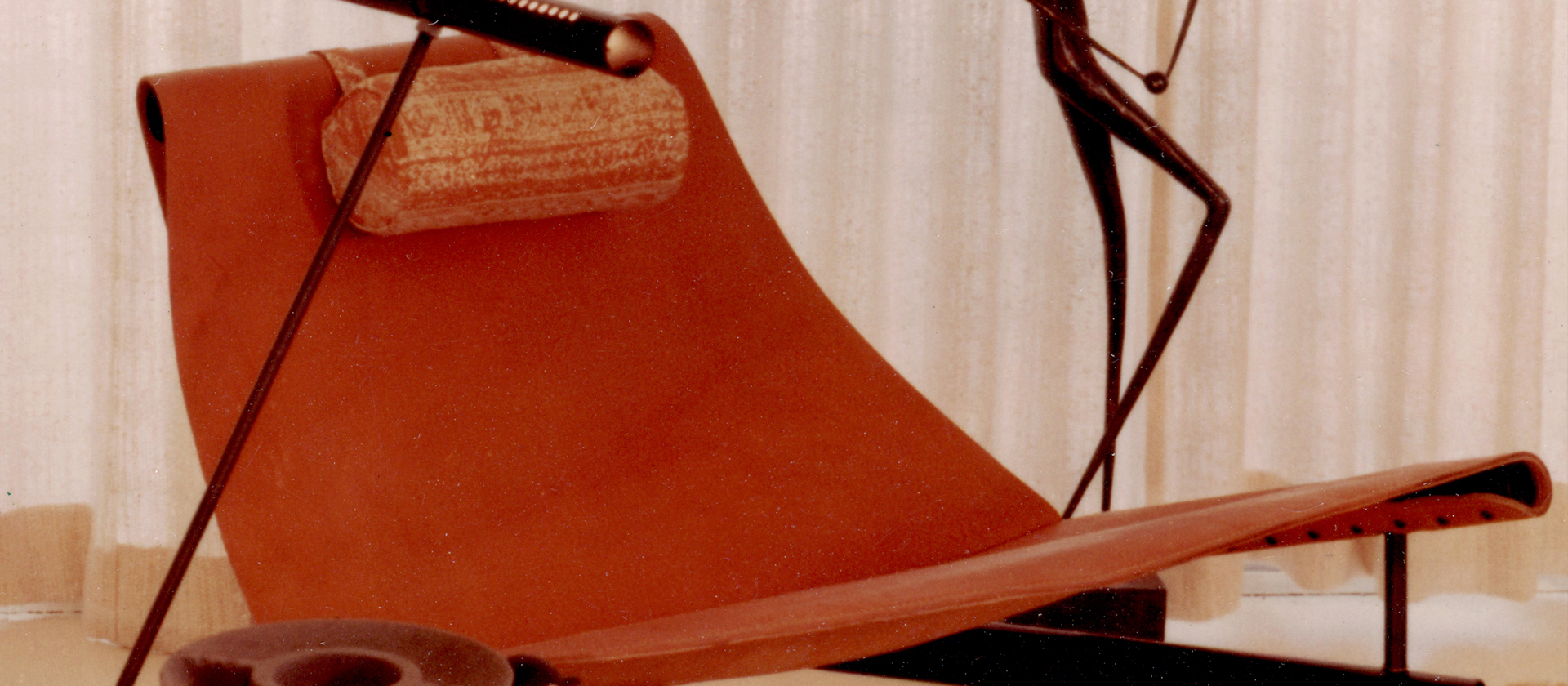
Footnotes
Brown, Nancy, Tucson Daily Citizen, Designer coordinates contemporary, territorial, Feb 27, 1973.
Gannett News Service, Designer Continues 80-Year Tradition of marking furniture. November 19, 1999.
Stern, Sherry, Arizona Daily Star, As Renaissance Man, He Gave Up Being Millionaire, June 8, 1978.
Stewart, P. J., Arizona Daily Star, Industrial designer Creates Clean Lined Modern Furniture, November 16, 1972.
St. Louis Dispatch, Fisherman Taught Furniture Making, August, 14, 1940.